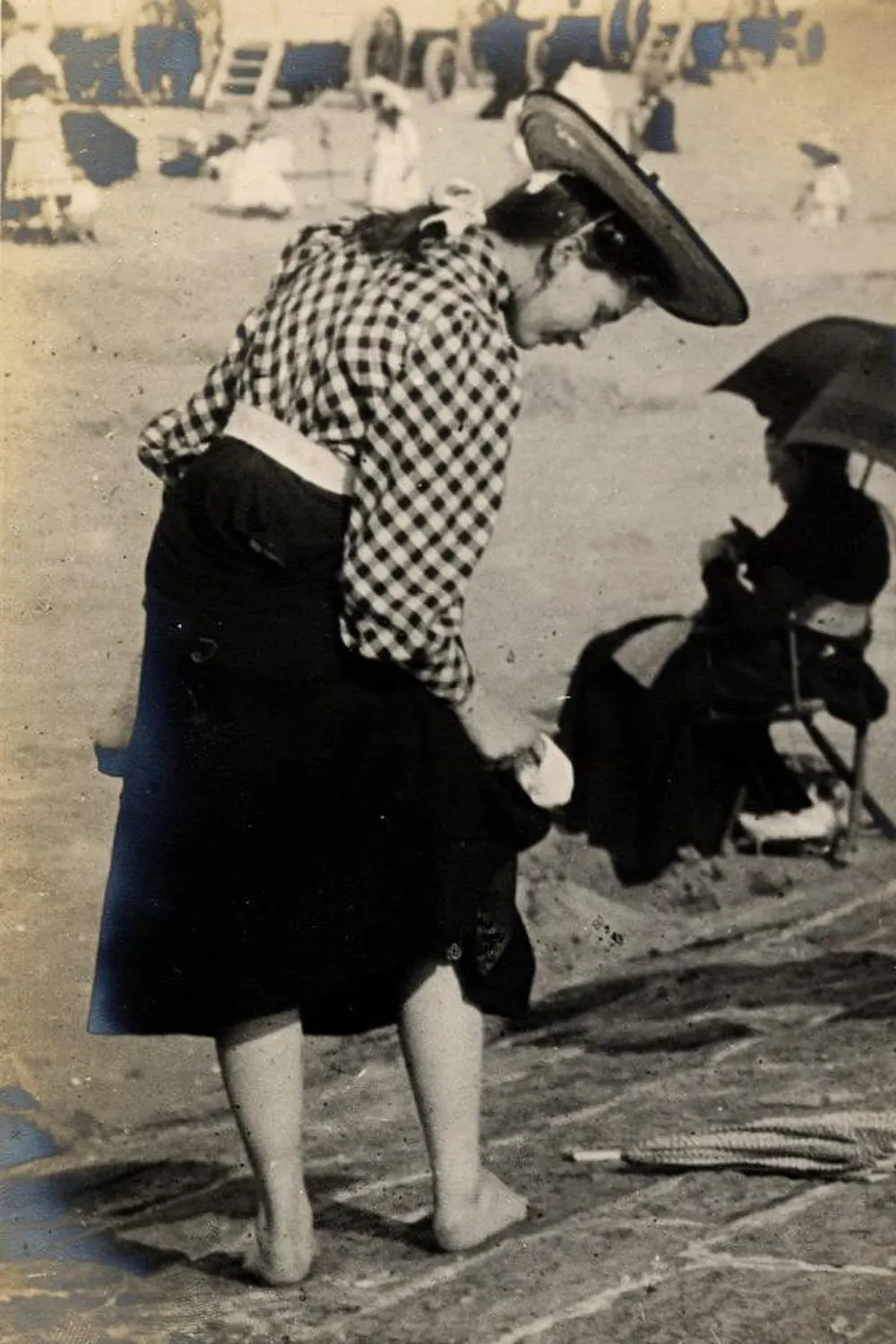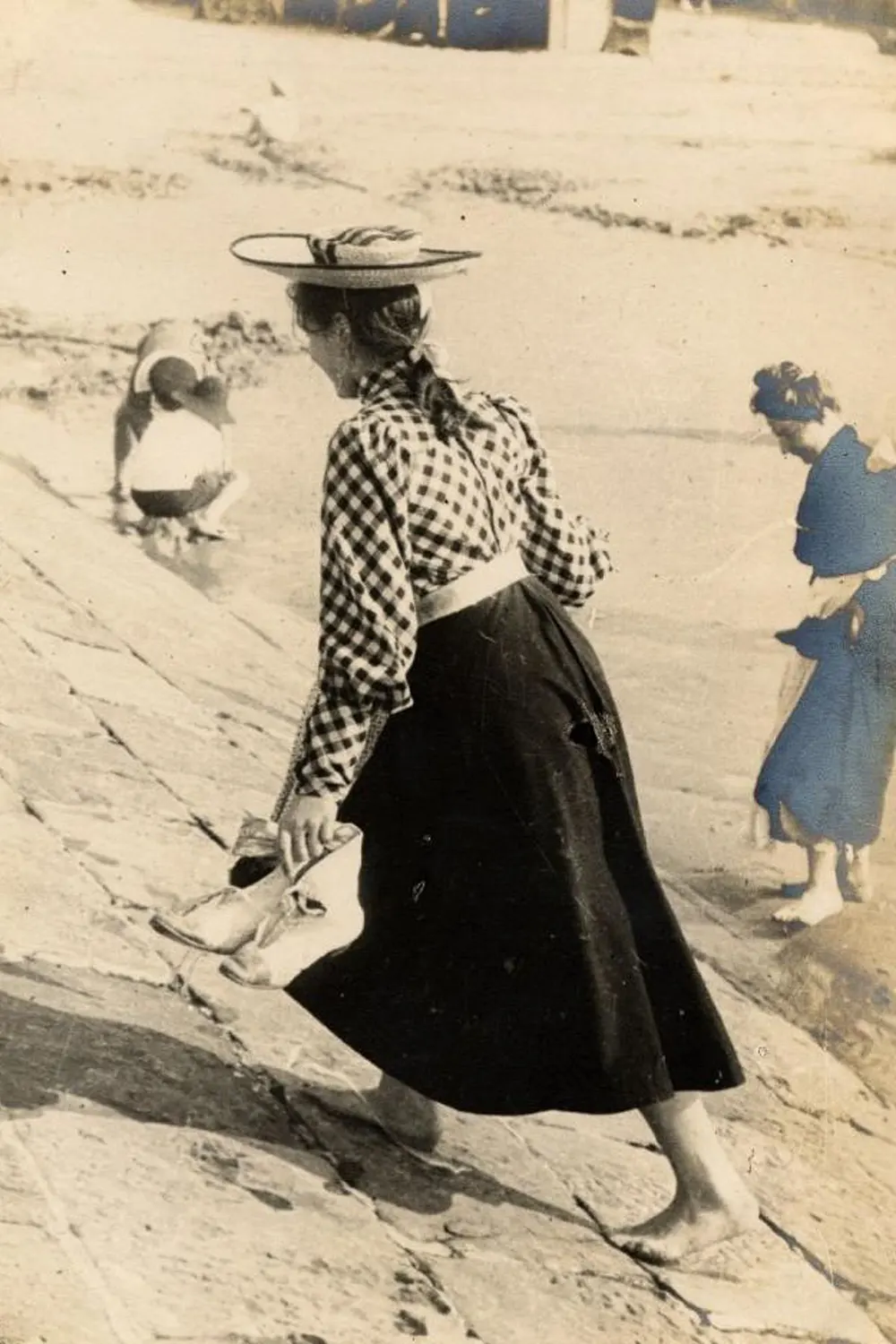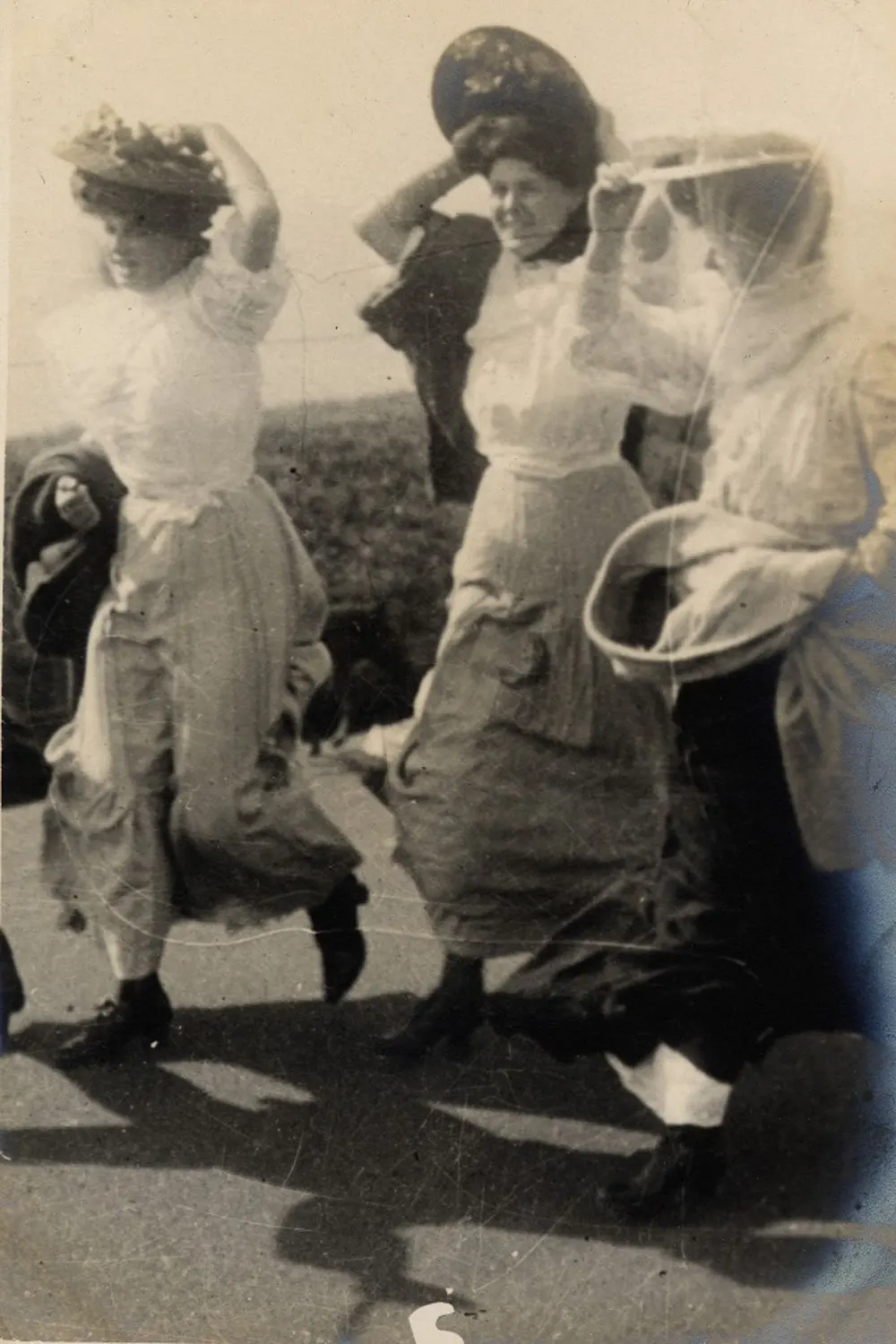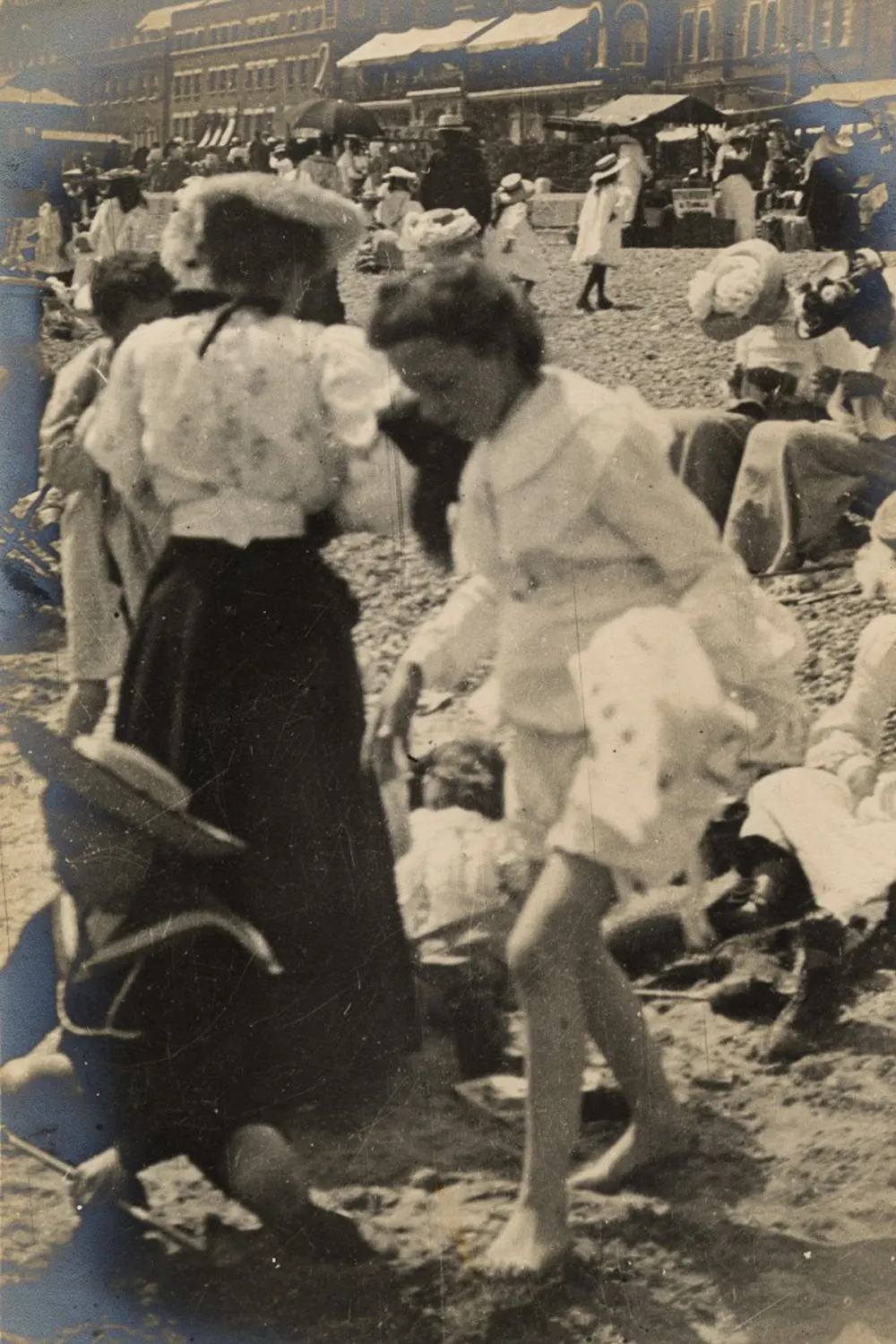He made his living as an artist and is most notably known for his drawings and cartoons in Punch magazine, where he eventually became a full-time artist. Although Sambourne had been using photography for his work since the 1880s, it is the candid 1906-1908 photographs that are important in documenting the history of street fashion. These photographs show mainly young women walking outside, going about their daily business. In these particular vintage photos shown in this article, Sambourne photographed people trying to beat the heat on the south coast of Britain and the north coast of Belgium. He captured crowded beach scenes at Weymouth, where younger women had removed more clothes, perhaps because it was more sheltered and hot on the beach. In the days when hitching up your ankle-length skirt just a little to avoid a muddy footpath constituted an occasion for men to stare and bus conductors to cheer, the bathing machines were needed for privacy not just in getting changed but in entering the water directly without being seen too much in what for us seems like a voluminous, quite thick bathing suit, but for them, the knitted, knee-length and short-sleeved costumes would have felt dangerously revealing. In 1907, the swimmer Annette Kellerman from Australia visited the United States as an “underwater ballerina”, a version of synchronized swimming involving diving into glass tanks. She was arrested on a Boston beach for indecent exposure because her swimsuit showed arms, legs, and the neck, a costume she adopted from England, and which was similar to men’s swimsuits of the time. Kellerman changed the suit to have long arms and legs and a collar, still keeping the close fit that revealed the shapes underneath. Kellerman marketed a line of bathing suits and her style of one-piece suits came to be known as “the Annette Kellerman”. The one-piece swimming tights became accepted swimsuit attire for women in parts of Europe by 1910. Despite opposition from some groups, the form-fitting style proved popular. It was not long before swimwear started to shrink further. At first, arms were exposed and then legs up to mid-thigh. Necklines receded from around the neck down to around the top of the bosom. The development of new fabrics allowed for new varieties of more comfortable and practical swimwear. (Photo credit: Edward Linley Sambourne / The Library Time Machine / Royal Borough of Kensington and Chelsea / Wikimedia Commons). Notify me of new posts by email.
Δ Subscribe















